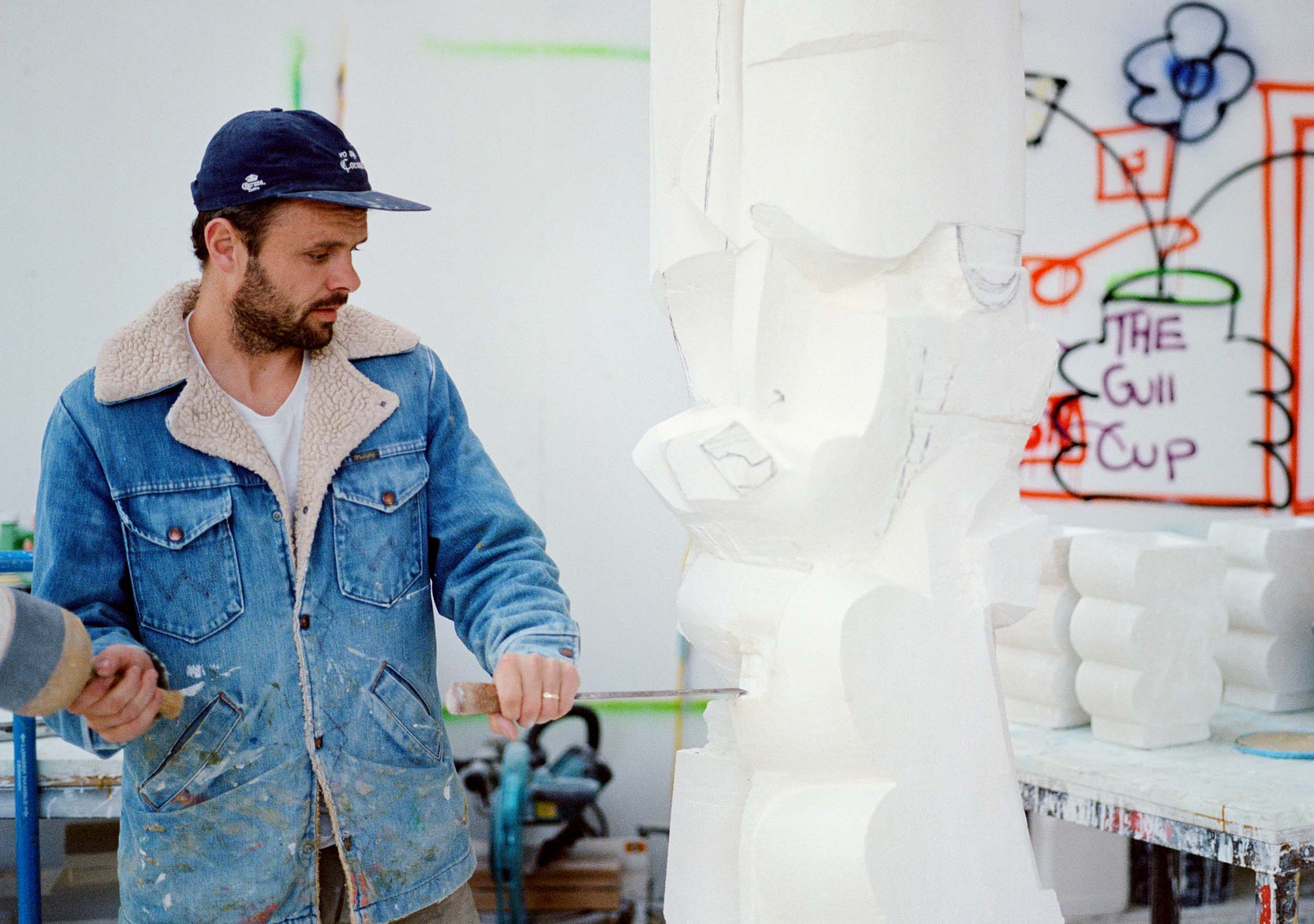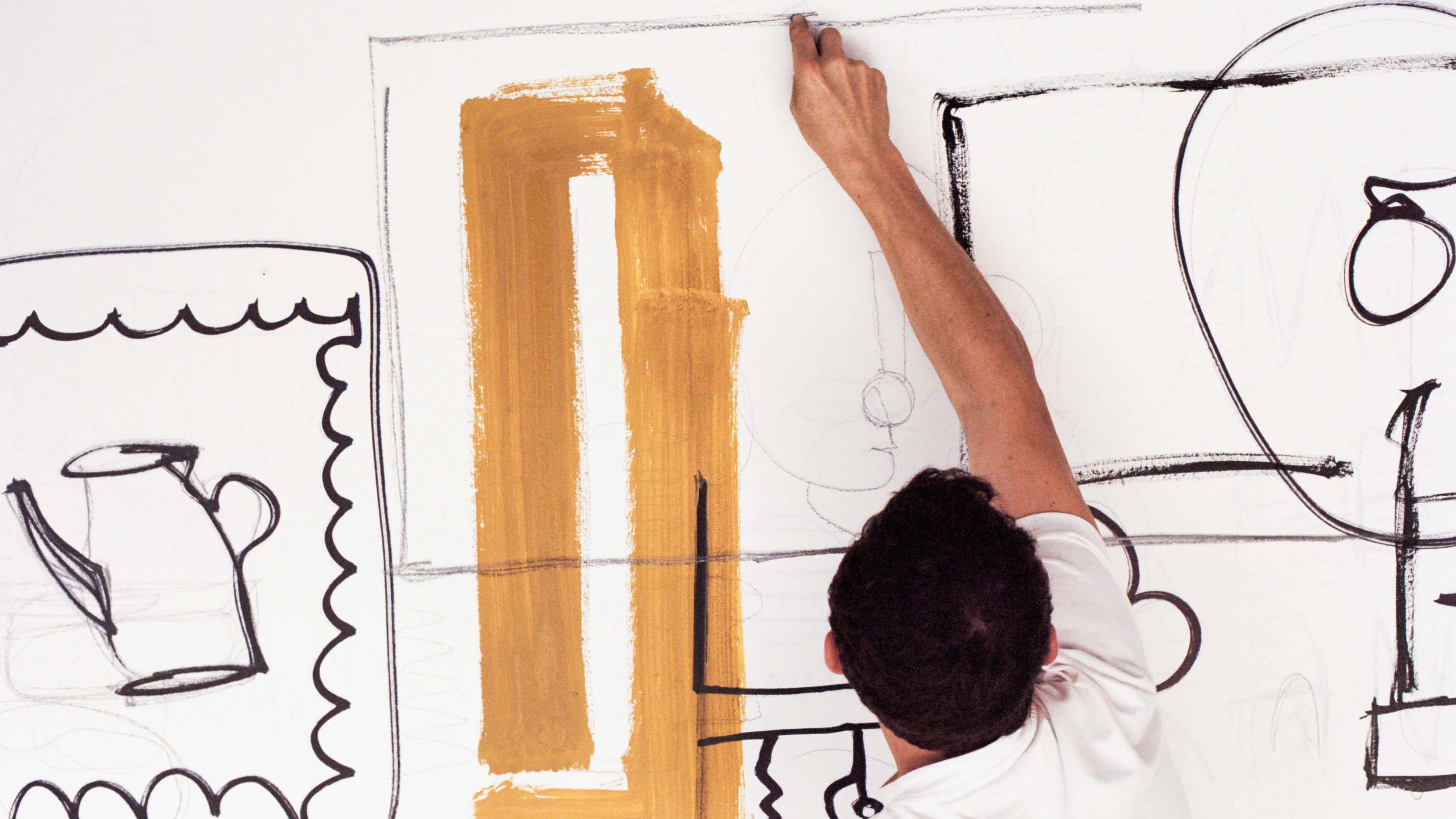Everything
Steven John Clark of denHolm was meant to be the next Alexander McQueen. Or at least that’s what the younger version of himself thought while getting his degree in fashion design and specialising in embroidery back in his native Scotland. But life has a funny way of circling back on itself. Instead, the now Melbourne-based artist has made a name and career for himself using the masonry skills he first acquired as an early teenager out of school.

“Definitely! If you’d spoken to me in my late teens, early 20s, of ever utilising my skills in stone masonry, I had no plan,” Clark tells ICON.
“I left stone masonry when I was 19, with the kind of feeling that I was never going to touch or be on a building site ever again. I would tell my dad on multiple occasions that I was going to be part of London Fashion Week and all of this kind of thing, while sitting, watching Fashion TV, sketching dresses.”
Thankfully things didn’t work out that way, otherwise we wouldn’t have denHolm. Named for the Scottish town Clark grew up in (Denholm), denHolm is a practice of experimentation in the form and function of furniture design that has slowly, you could say inevitably, evolved to include sculpting and painting, round out Clark’s output into a fully-fledged creative practice.
A signature touch for carving abstract shapes that hover between the alien and familiar, his work sits comfortably across both art and object – side tables, counters, custom furniture pieces and artworks that delight the eyes and bring a sense of play to the space they occupy.

And like many great creative practices, Clark says he arrived at it by mistake.
After arriving in Australia, Clark soon found himself looking for an outlet for the creativity that he’d been nurturing since his fashion school days.
“It really did happen kind of by mistake. I was trying to get out of stone masonry in Australia. I knew that I was starting to get the feeling to be creative again, but I just didn’t know what it was,” says Clark.
“I was mixing cement with different aggregates and fucking around in the studio doing that, but nothing ever hit home. Then one of my wife’s friends asked me to make them a plinth, just a stone plinth. I made it, and then everyone got all excited about it. And I was like, ‘Oh fuck. I will do a few more of these.’ I made a few more and then within six months, I had to kind of quit my job.”

While Clark has made a distinction between his work in furniture under the name denHolm and his growing artwork that exists simply under his personal moniker Steven John Clark, both streams of output clearly possess Clark’s signature. There’s a looseness of line that finds freedom in its rounded, bulging edges. Shapes balloon into the surrounding space. Even in the paintings where they instead sweep across the surface of a canvas, there’s the same muscular flourish.
“denHolm was born out of basically me being scared to just venture straight into art, and to see that as my only cash cow,” says Clark.
“I decided that I would make objects – furniture – that had the same kind of rhythm as my sculptures. And I really wanted to make things that had a lot of personality, that couldn’t be read from one angle, and have everything asymmetrical, everything that we make in furniture. I didn’t want that to be the case when I made a piece with denHolm.”

One of the denHolm signature motifs – rough, pagan surfaces – is informed by those early days studying fabrications for clothing. The effect they create is an almost fluffiness that belies the density of the materials, giving instead the impression of incredible lightness and a freedom from traditional forms.
“The ability to lay up textures, colours, and add that with the technical side that I picked up where I suppose a stone mason, and it’s just kind of bred what’s happening now…I would say that it’s a play on a lot of accents from different architectural periods, and petition them in a way that isn’t symmetrical and doesn’t have the same rhythms because everything that we have in the outside world, and even inside our houses, are all symmetrical. They all have a very particular rhythm to them, and they’re all kind of heading towards perfect like they could maybe be made by a robot. So I’ve always tried not to get too perfect with the way that we make stuff. If there’s chips or little bashes or whatever, we’ll just change the shape or we’ll run with it. So then everything has as individual a piece as possible, when it comes to making the product range that we have, which is multiples of the same design.”